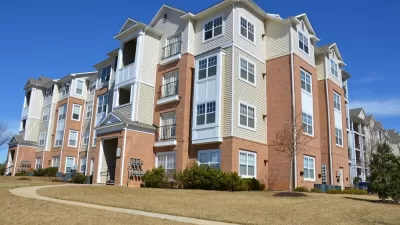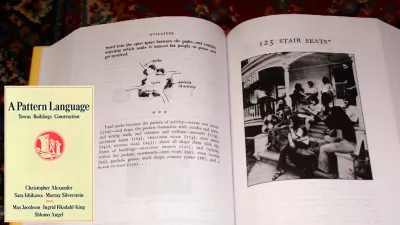Building on one of the reverberating themes from this month's CNU 20 in West Palm Beach, Joe Nickol proposes the path of evolution for a movement that has become the new norm, but may have overlooked some critical issues in the process.
At the outset of his essay, Nickol takes an opportunity to survey what New Urbanism has managed to accomplish over the thirty years of its ascendance.
"In standing back and looking at what we have accomplished together, we can confidently say that the theory has largely proved to be correct. Over the course of the last thirty years, we have firmly established mixed use, walkability and neighborhood structure as the new paradigm for development in lieu of suburban sprawl. This is no small effort and because of it we can stand atop these accomplishments and see what is out there as our next series of challenges begin to emerge."
For Nickol, those challenges begin in the "middle section of the built landscape between first tier cities and suburbia," where the principles of New Urbanism have rarely been adopted or applied.
"It is amazing that even in a time when we face such dramatic disruptions to our economic and environmental health, we've let the idea fester that our old cities, towns, and neighborhoods-evolved over centuries-are either too difficult to work in or not up to the task of making strong and prosperous communities."
"We have the great opportunity and responsibility to leverage what we have learned through building in a controlled, lab-like setting of our new towns, resort towns, and edge towns and get back to the urban field to begin the monumental task of regenerating our cities, towns, and neighborhoods."
FULL STORY: New Urbanism's Pivot Point

Planetizen Federal Action Tracker
A weekly monitor of how Trump’s orders and actions are impacting planners and planning in America.

Maui's Vacation Rental Debate Turns Ugly
Verbal attacks, misinformation campaigns and fistfights plague a high-stakes debate to convert thousands of vacation rentals into long-term housing.

San Francisco Suspends Traffic Calming Amidst Record Deaths
Citing “a challenging fiscal landscape,” the city will cease the program on the heels of 42 traffic deaths, including 24 pedestrians.

Amtrak Rolls Out New Orleans to Alabama “Mardi Gras” Train
The new service will operate morning and evening departures between Mobile and New Orleans.

The Subversive Car-Free Guide to Trump's Great American Road Trip
Car-free ways to access Chicagoland’s best tourist attractions.

San Antonio and Austin are Fusing Into one Massive Megaregion
The region spanning the two central Texas cities is growing fast, posing challenges for local infrastructure and water supplies.
Urban Design for Planners 1: Software Tools
This six-course series explores essential urban design concepts using open source software and equips planners with the tools they need to participate fully in the urban design process.
Planning for Universal Design
Learn the tools for implementing Universal Design in planning regulations.
Heyer Gruel & Associates PA
JM Goldson LLC
Custer County Colorado
City of Camden Redevelopment Agency
City of Astoria
Transportation Research & Education Center (TREC) at Portland State University
Jefferson Parish Government
Camden Redevelopment Agency
City of Claremont





























